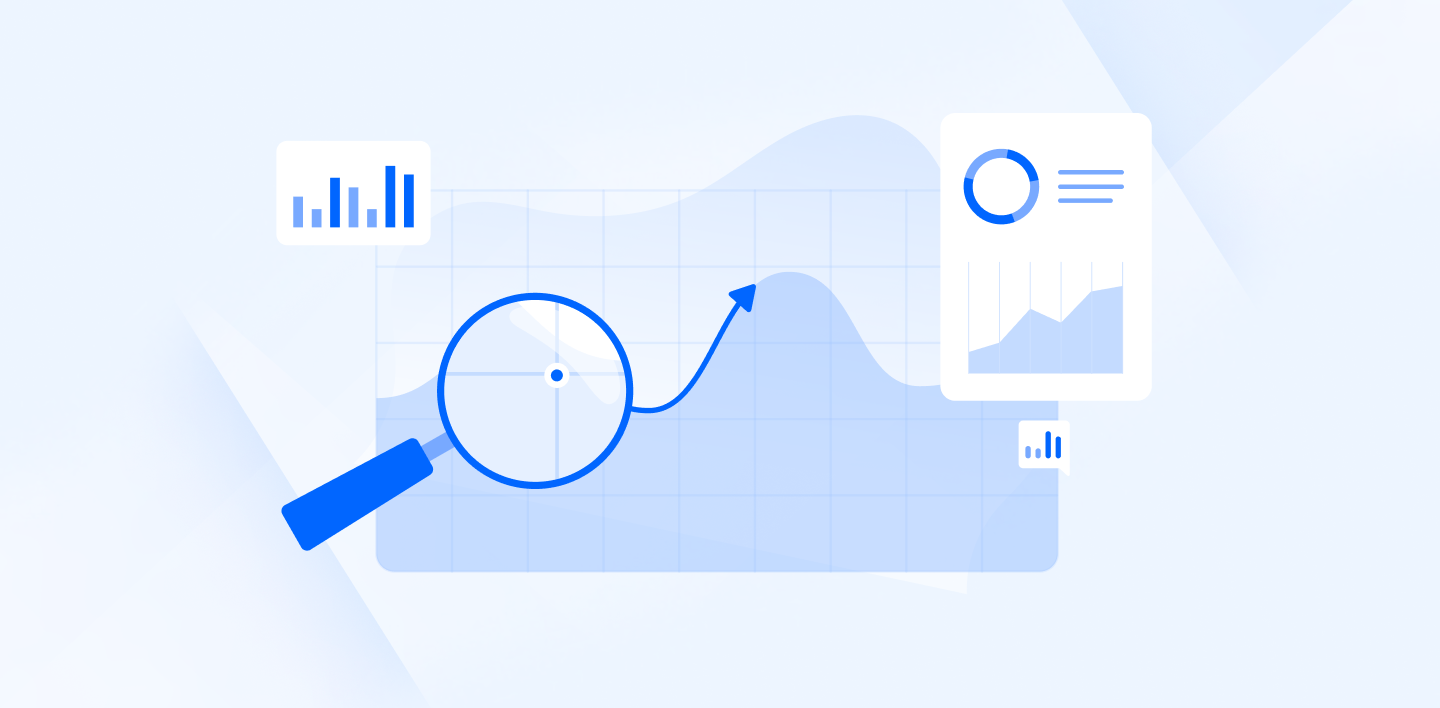Data Management Strategy: Best Practices to Choose

With data being the cornerstone of organizational growth, your data management strategy is integral to your business's success. Data is valued as much as human capital in today's business world: both are key factors contributing to the overall productivity of a company's strategy.
Companies have to take simple steps to collect, manage, and analyze various data to run their operations successfully and efficiently. Data management systems can provide valuable tools to businesses when they need a competitive edge. So, let’s dive in and find out more.
What Is a Data Management Strategy?
Data is the lifeblood of a company, be it a small startup or a well-established mega-corporation. Without data, any business may falter or even be left behind. The purpose of a data management strategy (DMS) is to ensure this doesn't happen.
A data management strategy is a structured process that allows an organization to deal with data in a well-defined manner so that it can be used for decision-making purposes. Simply put, it's what a company does with the information it already has and the information it collects moving forward.
The data in a DMS is usually collected through analytics. Business analytics is mainly done within businesses seeking a competitive advantage over rivals in their respective markets or industries.
The Importance of Data Management Strategy for Your Business
Data moves in the blink of an eye in the modern digital age. And it can either be your greatest asset or your weakest link. Here's why you need an effective data management strategy:
Instant Availability of Information
A plethora of data is available in one place with just one click, in the most efficient manner possible and at the lowest possible cost.
Adjust to Changing Market Conditions
Running a business always means change. Businesses need to have good reporting to track and analyze a variety of important metrics to stay competitive. You should monitor market fluctuations and adapt your business strategy accordingly.
Provide a Better Customer Experience
The customer relationship management database helps businesses manage customer behavior patterns. This customer data is then analyzed to determine what changes can be made to improve the customer experience.
Lead to Rational Decisions
Using your existing data will keep you alert and informed. This allows you to leverage insights and facts during decision-making so that your business plans are truly grounded in the present.
Minimize Security Risks
A data loss can cause an organization to suffer financial, physical, and legal consequences that are often impossible to recover from. Data management is a proactive business strategy to prevent data losses and breaches, theft of information, and disruptions to your business operations that could happen because of system failures or human error.
What is the DIKW Pyramid? How can it be useful?
The DIKW pyramid is a model that describes the relationship between data, information, knowledge, and wisdom.
The model does not provide a method for moving from one stage of data to the next, but it does illustrate the process of knowledge acquisition and the progression from one level of understanding to the next.
By understanding where you are in relation to the data derived from your business audits and knowing where you want to be, you can use this model as a guide for transforming your data into information and knowledge.
With this knowledge, you can determine what actions need to take place in order to generate wisdom or develop expertise in your field.
- D = Data: Data is the raw base of companies’ operations and needs a very good classification system in order to be easily retrievable. More than one type of data may be collected according to the company's goal.
- I = Information: Information is derived from data which is then processed, entered into a computer with some degree of formality, and finally directed towards its final manifestation as Knowledge that can be used to support decision-making in organizations. This process is employed when you must analyze data to come up with a clear solution.
- K = Knowledge: Knowledge is a collection of pieces of information that are organized to achieve a defined goal. If you seek knowledge to succeed in your marketing and sales efforts, you need to conduct an in-depth analysis of the information available.
- W = Wisdom: Wisdom is knowledge in action. Wisdom is the ability to use knowledge and combine the knowledge gained from experience with information you gain to identify patterns and trends in the data and make accurate decisions in real time.
The pyramid has often been used to describe the levels of data mastery. The DIKW information hierarchy can be used as a foundational building block to improve your ability to collect, process, and transform real-time data into an effective business strategy. It will help you maximize the value of your analytics investments while creating a strong strategy.

What Are the Best Data Management Practices to Choose?
Set Goals
For businesses, the best data management practices are those that are based on goals. Any time you have a goal in mind, everything you do with data has to show how it helps you achieve that goal. Moreover, employing an employee time tracking app can further streamline operations and enhance goal-oriented productivity.
If you are managing your company's data, you should track key metrics and use them to make decisions. Data management can be challenging to do well because there is so much information that is being collected by your business and the various tools you use.
When we say "managing your company's data", we mean taking an active role in determining what data is relevant and how it should be used. This includes defining business goals and then creating a series of steps for evaluating whether your data collection methodology aligns with those goals. This includes defining SMART goals and then creating a series of steps for evaluating whether your data collection methodology aligns with those goals.
Without goals, the data management and analytics process is reduced to a guessing game. These goals act as a lens through which the company can evaluate its data and determine what it will do with that information.
Reduce Duplicate Data
Most companies would agree that information is power, and the more information you have about your business affairs, the better informed you will be. Sometimes, though, having too much of something isn't always a good thing. Especially if that is duplicate information. One of the best data management practices is to reduce duplicate or near-duplicate data.
You can find it by actively looking for it across the enterprise and proactively removing or consolidating it. One of the most common scenarios where duplicate data occurs is when different applications store data in the same locations. An audit process can spot this easily, and these processes can be carried out manually or automated if there is a large amount of data.
Moreover, reducing redundant information can lower storage costs. This can result in less storage being required, less time spent searching for and filtering information, and also less confusion caused by incomplete, inaccurate, or different versions of the same dataset in business decision-making.
Scrub Data to Improve Quality
The quality of your information directly impacts the accuracy of your data analysis. One way to ensure that you’re not wasting time and money investing in reports that are based on inaccurate figures is to use data quality services to scrub the data before you run an analysis. This will ensure the workflows that follow the cleansing process will only use high-quality, accurate information from the beginning.
The data cleansing tools that are available today are amazing: they’re capable of using pre-defined rules and your own custom rules to identify invalid records and determine their values. You can even use data quality rules to enhance your data, adding descriptive attributes you would never have considered.
Data cleansing is necessary when you cannot trust the source of information. An inaccurate source results in incorrect information, which could put your business at risk. Therefore, it is very important to extract accurate and reliable data to ensure that your business growth does not become affected by wrong insights.
Prepare Data for Analytics by Shaping
Data preparation is a term used to describe the series of data manipulations required to normalize data and make it suitable for analytics. This restructuring of information in an audit makes it easier to explore and interpret information in business analysis. It goes beyond just putting data into spreadsheets.
If a project involves more than one dataset, it may be important to consider reshaping it at the beginning of the project so that collaborators on the analytics team don't have to do it every time they have a question. Although it may sound a bit complicated, the market offers many versatile solutions to automate this process.
Various reshaping transformations are applied to data to shape it according to the intended analytical process. These transformations include:
- Frequency analysis transformation, which is used for converting discrete variables into a frequency table
- Partitioning transformation is applied to continuous variables to divide them into smaller meaningful groups
- Appending operation concatenates two datasets into one dataset containing all the observations from both original datasets
- Multiple summarizations transform aggregation tables like ‘count’, ‘sum’ etc.
- Grouping variables
- Storing results in a single row aggregated value, and so on
By shaping and molding your information in accordance with the analysis technique being used and the design of the resulting report or graph, you are one step closer to success.
Specify Data Assets
One of the best strategies for data governance is to specify what data assets exist and what problems they solve – both within your organization and contributed by others.
Depending on your enterprise, assets can refer to terms in a search index, assets in a database, or even external assets to your organization, such as geographic locations. Organizations strive to understand their data, know what they have, where it resides, and what value it can bring.
The best data management strategies are the simplest. Ideally, you should be able to put your models in front of someone who has never done a data model before, and they should understand what it means.
Data models tend to grow in complexity as a company grows. What started as simply an ERD at the very beginning of a project will probably become more detailed over time. This is generally a good thing because the more complex something is, the better it can be understood – but only if there is a need for the extra detail.
At the enterprise level, your models should be high-level – the more complex something is, the less detailed your models should be to describe it. A conceptual model is all you need to convey what the data assets are and how they relate to one another.
Ensure Data Security
Data security is one of the best data management strategies, as your data is exposed to risk when it’s not secured against unauthorized access. Data theft and unauthorized access can cause significant damage to your company and its employees, so it’s important to protect information systems from internal and external threats.
Data breaches or inadequate data security can lead to revenue loss, reputation damage, and loss of trust. These potential consequences can hinder business development and sales.
Ensuring that people get access to only the information that they should and that information is not available to people who shouldn’t have it is paramount in modern computing. You can do this with a combination of strong authentication and encryption technologies, plus robust policies around access control and data retention. This requires maintaining a strong security system and looking for further opportunities to strengthen it.
Furthermore, with the widespread use of SSL/TLS encryption and other web security protocols becoming more common, website owners and administrators must ensure their websites are secured.
Webmasters should strive to deliver a secure site while increasing user trust, search engine rankings, and conversions. Evaluate your current approach, and consider whether there are ways to improve its efficiency or build more effective safeguards.

Time to Strategize
Data is the lifeblood of any business. If your company does not begin to take steps toward managing your data, you run the risk of being unable to adapt quickly to an increasingly data-driven world. Data provides businesses of all sizes with the information they need to be successful.
Still, proper infrastructure and data management techniques are necessary if any meaningful insights will be derived from that data. Businesses need to be thoughtful about their search engine optimization strategy to grow and remain competitive in their respective markets. Companies can operate more efficiently, make smarter business decisions, and ensure long-term success by understanding how to manage their resources.

